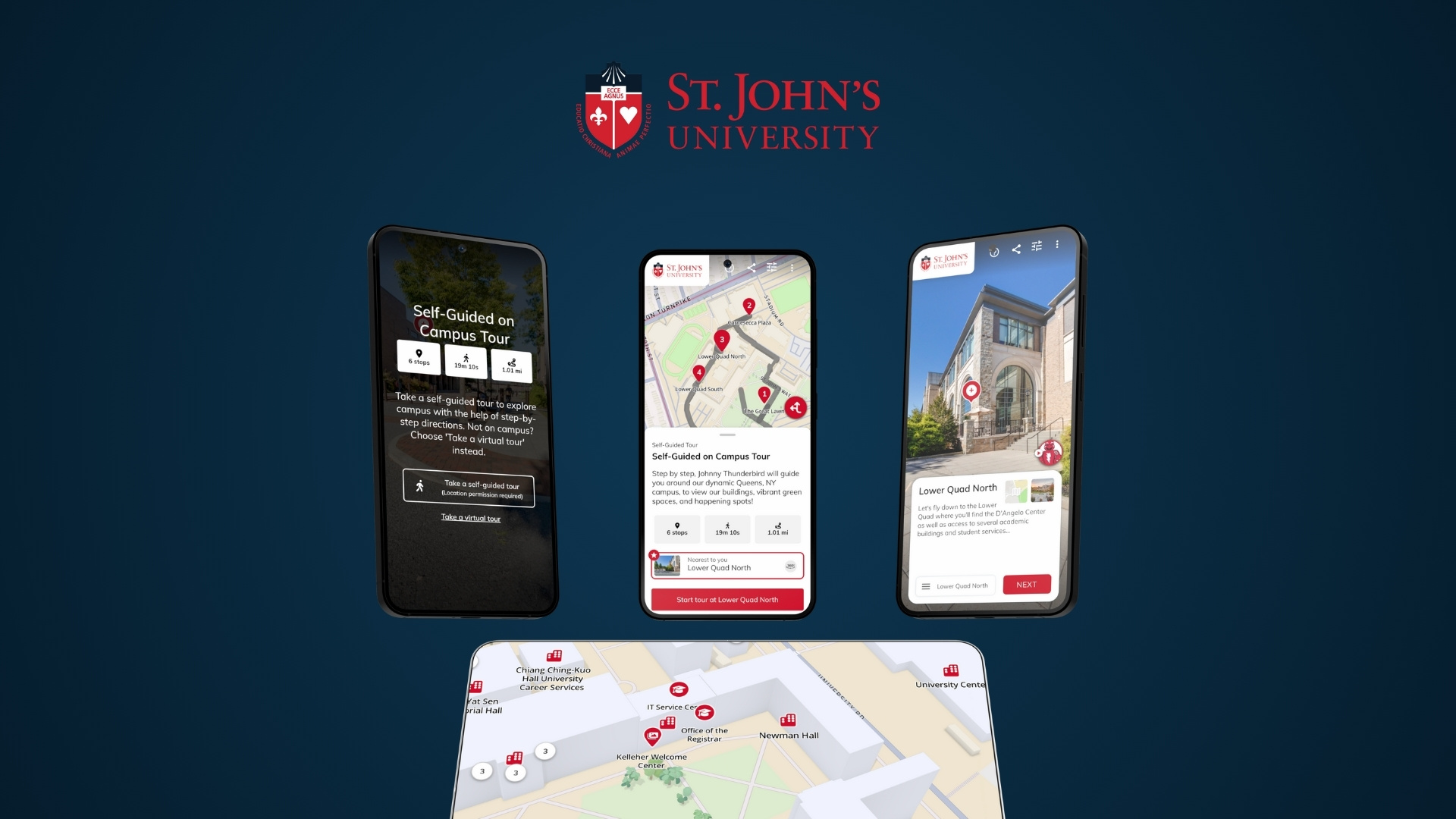
Algonquin College is no stranger to creating strong student experiences that drive results. After launching their tour as a valuable immersive experience for students in 2019, the team was excited about their opportunity to highlight campuses and programs in recruitment presentations. The tool became more crucial than ever during the pandemic giving students an inside look of life at Algonquin, while also supporting the college’s strategic objective of being student-focused.
Access to campus has increased since the start of the pandemic. However, Algonquin is aware that the hybrid world is here to stay and they continue to add value to their high-performing digital tools. With three years under their belt using the Circuit Virtual Tour, Algonquin is building on this momentum by growing their tour to support students with new content and Maps capabilities. An interview with Chris Gill, Marketing Team Lead, revealed three factors leading to continued growth of their tour.

Measuring success of the tour
The college approaches their marketing investments with an eye on outcomes and measurability. For Chris and the rest of the marketing team, this boils down to three main metrics:
- Leads generated monthly
- Cost per lead → # of leads generated / cost of virtual tour
- Engagement → visitors and time spent on site
Results in these areas help navigate where to grow the tour and put their energy. Chris shares that Algonquin’s virtual tour has been, “a driving factor for lead generation and supports efforts to convert leads into Algonquin students.” Their content is gated in most places and because of the level of value in the tour, students are open to sharing their information – a big win for Algonquin to keep the conversation going.

Growing the tour over time
Building the tour incrementally has offered major success for Algonquin. The project is a clear example of how continued updates keep a virtual tour fresh and relevant to students. “The tour’s strong lead generation drives us to continue enhancing the experience for future students”, states Chris.
Through the last few years, they’ve continuously added new scenes, buildings and add-ons to their virtual tour. In doing so, they ensure a comprehensive experience is presented to virtual visitors and kept it fresh for new and returning visitors. With each change, the team was able to see increases in engagement and conversion from tour analytics.
About six months after launching, they added summer content. Followed by audio guides a year later. Most recently, they’ve added their new 125,000 square foot Jack Doyle Athletics & Recreation Centre and Maps. Maps provides a look at where tour spaces live on campus and the community around it. The college is excited to share Maps with students to help those off-campus get to know it and to help with a sense of where people need to go once they arrive.

Taking a collaborative approach using resources across campus
Algonquin’s marketing team adopts a collaborative cross-college approach to crafting their virtual tour. Subject matter experts across the college are given the chance to provide insights about what makes their learning spaces special for students. This has helped secure increased buy-in from internal college stakeholders. Chris says, “with the positive results and feedback from students, people are excited and reaching out to us to add new spaces into the virtual tour.”

Building on their success
Expanding their tour over time has been crucial to the continued success of Algonquin’s tour. On top of impressive lead generation results, it’s opened new markets for potential student interaction. Students who don’t live near the college are now able to see campus for themselves, whether they’re an hour or an ocean away. Strong results and positive feedback about the tour allow Algonquin to continue their cycle of success.
Virtual tours go farther than one interaction with a student. Algonquin is using the tool in nurture campaigns to help prospects become students. The team has included their virtual tour in emails to excite students about what is available to them on campus and move them towards application. Tying the tour into all stages of the student cycle can support students from recruitment into conversion, and now with Maps, all the way to orientation.
Explore Algonquin's tour
Connect with our team to bring your virtual tour to the next level


.png)




